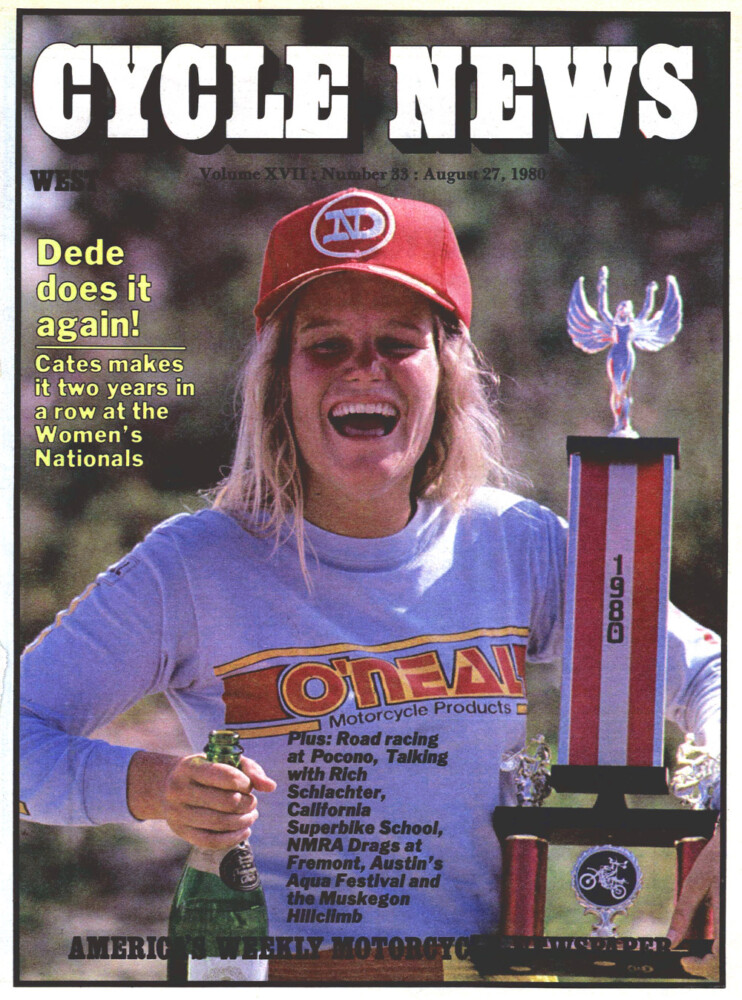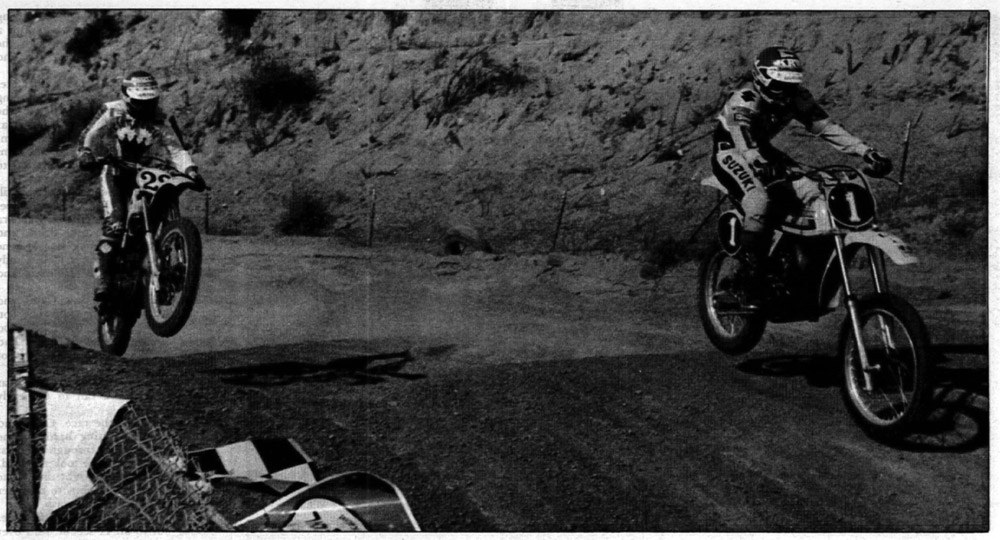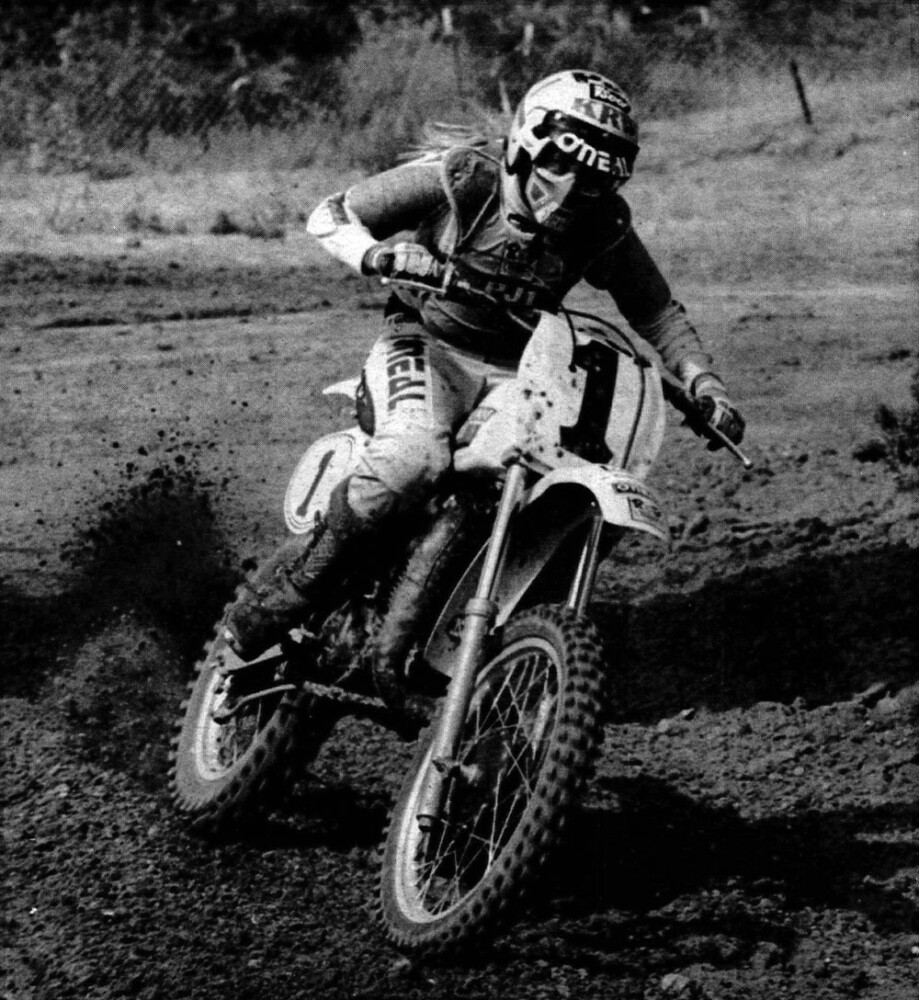Cycle News Archives
COLUMN
The fastest woman on a motocross track in 1979 and 1980 was Californian Dede Cates
By Kent Taylor
What’s in a name? Parents might agonize for months, trying out different ones before finally settling and making it official on the county birth certificate. Sometimes they nail it, and sometimes those children take their given names and give them back, swapping out those titles for nicknames or perhaps shorter, user-friendly versions. For Deetra Cates, a shorter name was a must for one very important reason.

Photos by Mark Kariya/CN Archives
“The name Deetra,” says one of America’s most successful women’s motocross racers ever “was too long to fit on my motocross pants for my skinny butt! So, I changed it to DeDe!”
She then adds, “I kinda hated that name anyway!”
The women (and some men) who raced motocross in the 1970s know the name DeDe Cates well, because they would often get a very good view of the spunky SoCal kid as she rocketed away from them on the track. The competition knew it was only a matter of time until DeDe was bye-bye, and on her way to winning championships in women’s motocross.
“My twin brother Dean and I were watching all of the other kids ride in the fields behind our houses in Montebello,” DeDe recalls. “My dad bought bikes for both us, and we started riding. I remember going out to the desert, riding all day, staying overnight, and then riding some more the next day. I really didn’t like doing that—I really wanted to try motocross, so we started racing when we were 13 years old.”
Jerry Cates operated a meat distribution business and would combine work trips and motocross adventures, taking Dean and DeDe around the western part of the U.S. to compete in the National Minicycle Association (NMA) events. “My heroes were Jeff Ward and Brian Myerscough. I really wanted to be like them.”
She wanted to go fast and knew that the best competition was in the classes that weren’t gender-specific. Cates competed against the boys, and she usually beat them, but she handled her success with grace.
“I never rubbed it in their faces,” she remembers. “If I was a boy, I know I wouldn’t have liked to have been beaten by a girl!”
Her father played a major role in her racing career, from the beginning to the very end, even moving the family closer to Saddleback Park so that the twins could spend more time riding. “My brother was always chasing girls,” she says, “but I was in love with that motorcycle. All I wanted to do was ride. I played softball when I was really young and surfed a little, but I rode as much as I could. It was my training for racing—I didn’t run or lift weights or anything besides ride to stay in shape. Plus, we could race four or five nights a week back then.
“I rode in CMC Intermediate, and there were a lot of good riders back then. I even raced against Ricky Johnson—for a few races, anyhow, until he moved into the Expert class.”
Women’s motocross, at the professional level, has been an experience that could be likened to taking a lap on an MX racetrack. An uphill climb to a fast, smooth straight, followed by a bumpy ride through the whoop-de-doos and a quick descent back downhill. There have been official and sort-of official women’s champions since the 1970s, dating back to 1974, when Nancy Payne was “Powder Puff National Champion.”

The series reached its zenith in 2007 under the savvy leadership of Miki Keller, who directed the series for several seasons. In addition to being a competitor, Keller was also a promoter. Under her watch, the Women’s Motocross Association ran in conjunction with the AMA National Championship series, and their races were a regular feature on the old Speedvision program Two Wheel Tuesday. Series champions like Tarah Geiger and Ashley Fiolek used their success in women’s MX as a springboard to notoriety outside of the industry.

But in the early days of women’s motocross, the championship was usually a one-day and done event. In 1979 and 1980, DeDe Cates was the fastest woman on a motocross track, winning consecutive championships. Only a first-turn crash at the 1981 event (which was held at the U.S. Grand Prix at Carlsbad) kept her from a three-peat.
Her racing career would end in ’81, with her final race being a victory in the Women’s class at Mammoth Mountain. “My father decided ‘that is enough,’ and we just quit. No more racing. My dad, who died four years ago, was my world and I couldn’t imagine doing this without him. I left the sport and haven’t even been on a motorcycle in all these years.”
Still living in SoCal, DeDe finds it hard to maintain a connection to motocross. “Every time I would read about or watch racing, it was like rubbing salt in a wound that hasn’t healed,” she says. “I miss it so much that I just have to stay away from it.”
“It was my life. You’ve got to love something. And I loved riding that motorcycle.” CN
Click here to read the Archives Column in the Cycle News Digital Edition Magazine.
Subscribe to six decades of Cycle News Archive issues
